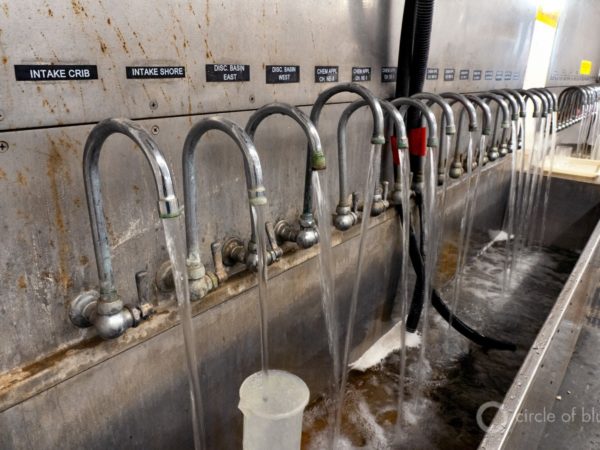
By Lester Graham, Michigan Radio
The Great Lakes News Collaborative includes Bridge Michigan; Circle of Blue; Great Lakes Now at Detroit Public Television; and Michigan Radio, Michigan’s NPR News Leader; who work together to bring audiences news and information about the impact of climate change, pollution, and aging infrastructure on the Great Lakes and drinking water. This independent journalism is supported by the Charles Stewart Mott Foundation. Find all the work HERE.
The U.S. Environmental Protection Agency has approved an Ohio plan to reduce the nutrient pollution that feeds toxic cyanobacterial blooms in Lake Erie.
Environmentalists said it won’t work.
The Ohio plan reduces phosphorus, but does not substantially reduce dissolved phosphorus, which cyanobacteria readily take up to grow.
“The numbers don’t work. It’ll never work in the lake. And the lake is pretty much doomed,” said Sandy Bihn with Lake Erie Waterkeeper.

Farmers hear from other farmers about using practices to reduce nutrient runoff from crop fields. Some environmentalists say it’s not about using best practices, it’s about stopping confined animal feeding operations (CAFOs) from spreading too much manure on cropland. (Lester Graham/Michigan Radio)
Environmentalists and the former head of the Ohio Sea Grant urged the U.S. EPA not to approve the Ohio plan.
They also feel the plan does not hold agriculture responsible for the nutrient pollution.
“It’s really scary that we keep increasing the number of confined animal feeding operations and the amount of manure,” said Bihn.
The plan is, among other things, to keep paying farmers to voluntarily use ‘best practices’ in farming such as low-till methods and establishing grassy buffers between crop fields and waterways.
“It’s just so disheartening that government won’t hold agriculture accountable and then pays them. It’s insulting. They’re paying them to do these practices that we’re not seeing any results from,” said Bihn.
Federal EPA documents said Ohio’s plan is just one tool and the federal agency will expand the use of other tools and ideas, but it was short on specifics.
“EPA, in partnership with Ohio EPA, other state and local agencies, and neighboring states, is endeavoring to bring other resources to address these problems, including funding from the Great Lakes Restoration Initiative, a new role as tri-chair of the Western Lake Erie Basin Partnership, and a revived coalition seeking to bring new ideas, approaches, and resources to bear on a problem that has been years in the making,” said Tera Fong, the director of the U.S. EPA’s Water Division, in a letter to the Ohio Environmental Protection Agency.
Catch more news at Great Lakes Now:
Toxins from cyanobacterial blooms can be airborne, but the threat to public health is unclear
Harmful algal blooms appearing on Lake Erie earlier than usual
Featured image: On July 5, 2023, harmful algal blooms were first spotted, forming on the east side of the Maumee Bay in the western basin of Lake Erie from a NOAA research vessel. That was earlier than expected. The cyanobacterial bloom was much larger than predicted this year. (Photo Credit: Lester Graham/Michigan Radio)




